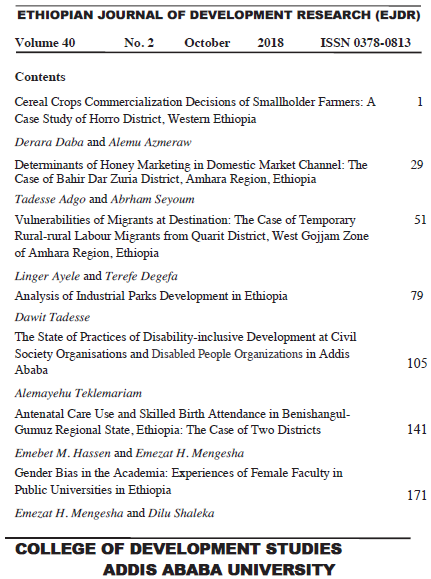The State of Practices of Disability-Inclusive Development at Civil Society Organisations and Disabled People Organisations in Addis Ababa
Keywords:
The State of Practices of Disability-Inclusive Development at Civil SocietyAbstract
The purpose of the present study was to explore the state of practices of
disability-inclusive development at Civil Society Organizations (CSOs) and
Disabled People Organizations (DPOs) in Addis Ababa. Qualitative case study
design was employed to conduct the study. Ten CSOs and five DPOs were
purposively selected for the study. They were selected due to their purported
inclusive programs of social developments. All the sampled participants from
the CSOs and four of the five DPOs participated in the study with detailed
information about the practice of disability-inclusive development. The major
result of the study revealed the prevalence of misunderstanding of disability
and disability-inclusive development trends within CSOs. This was
manifested by the poor status of CSOs’ development programs. Policies and
strategies were generic, exclusive of people with disability and the attempt at
inclusive development was very discouraging. Such misunderstanding created
lack of accessibility and service provisions for persons with disabilities. The
CSOs did not create available partners with NGOs and Governmental
Organizations for the move towards disability-inclusive development. The
results also revealed that the central challenges for all people with disabilities
were the existence of barriers in their environment. Among these attitudinal
barriers was the one which created individual and institutional barriers in the
move towards disability inclusive development. The participation of CSOs in
Downloads
Published
How to Cite
Issue
Section
License
Copyright (c) 2022 Alemayehu Teklemariam

This work is licensed under a Creative Commons Attribution 4.0 International License.


